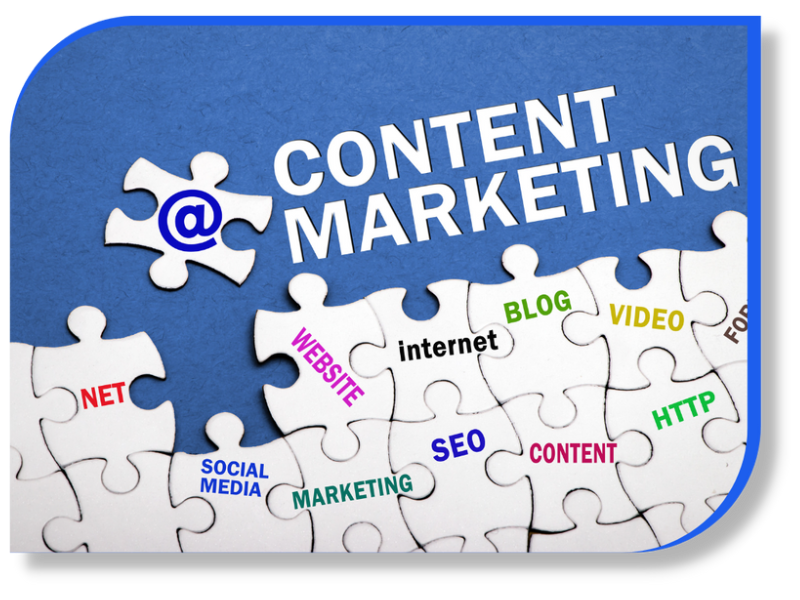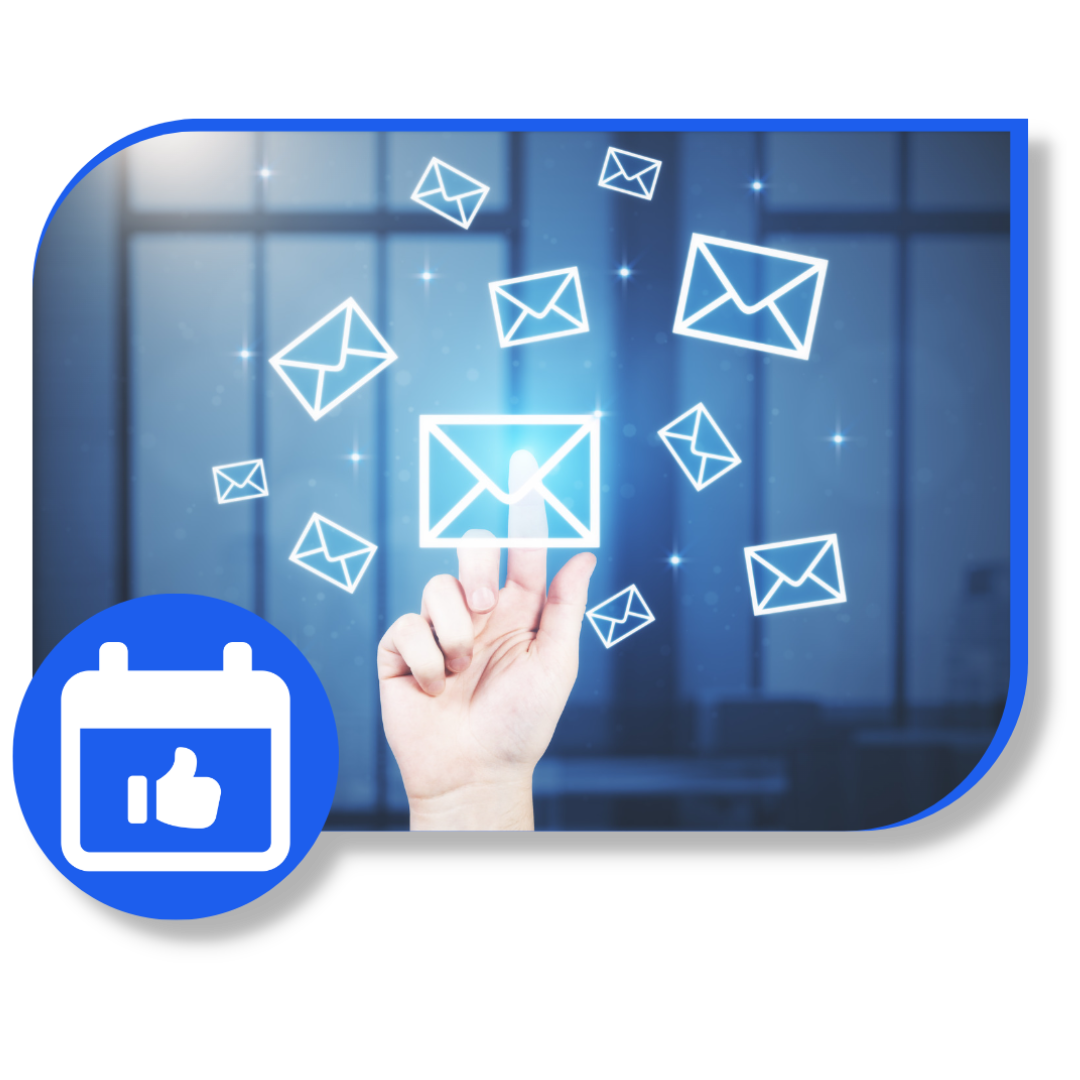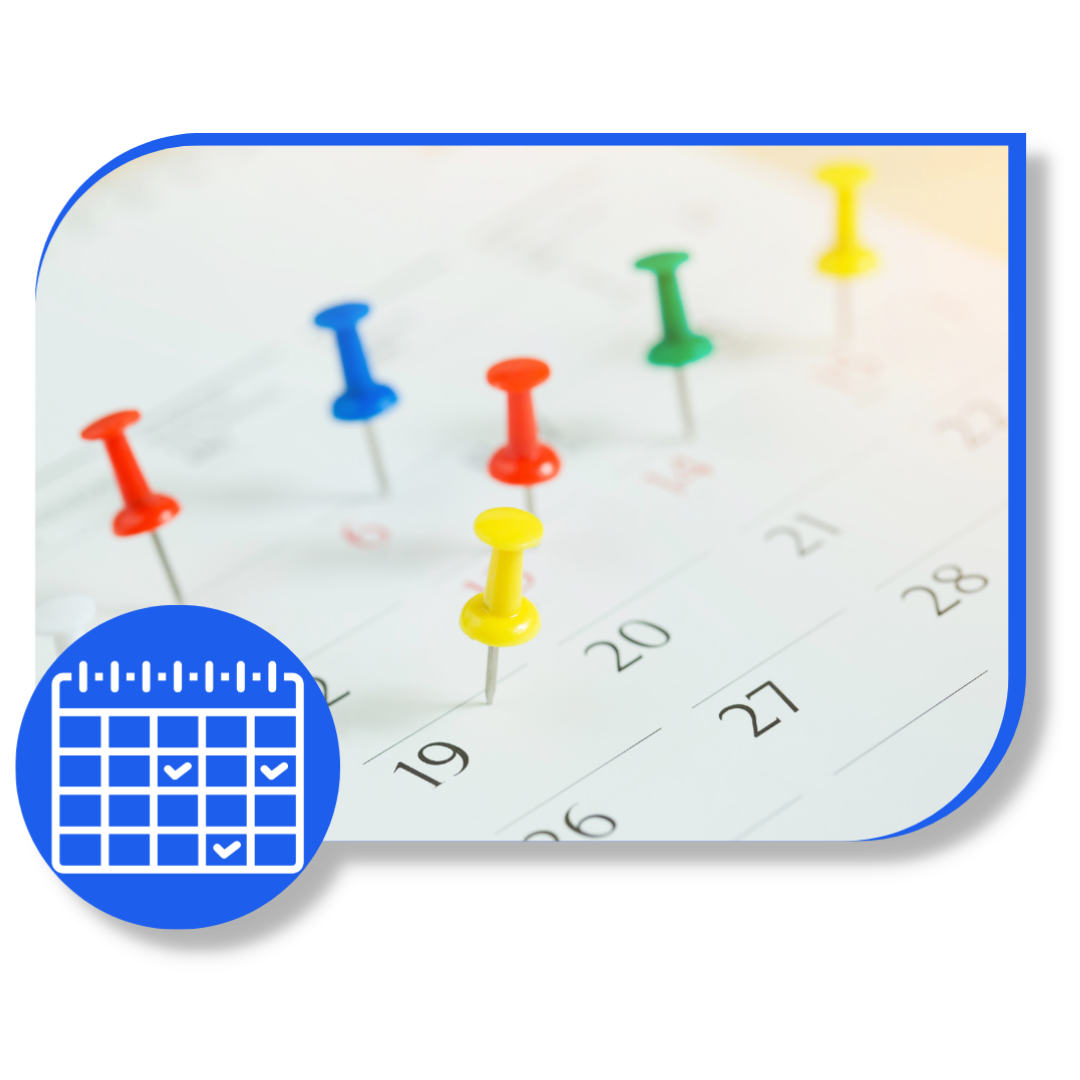Your Business. Powered by AI.
24/7 Lead Generation + 24/7 Lead Handling.
We dominate local search to bring you leads. AI Employees answer every call, book every appointment, respond instantly. You just close deals.


Vancouver Businesses Are Bleeding Money
Every day, local businesses lose customers to:
❌ Missed calls (40% go unanswered)
❌ Slow response times (leads go cold in 5 minutes)
❌ No after-hours coverage (emergencies don't wait)
❌ Invisible online (competitors dominate search)
❌ Missing from AI answers (ChatGPT, Perplexity don't know you exist)
Your competitors are solving these problems.
Are you?
Two Services. Total Domination.
🎯 LOCAL DOMINATION - We make you impossible to ignore. SEO, AEO, GEO, and Chat Engine Optimization. Result: Leads flow in 24/7.
🤖 AI EMPLOYEES - Never miss another opportunity. AI Receptionist, AI Appointment Setter, AI Chat Agent. Result: Every lead gets handled.
Local Domination brings the leads. AI Employees convert them. You grow without hiring.


From Invisible to Unstoppable in 30 Days
Step 1: AUDIT - We analyze your online presence, competitors, and missed opportunities.
Step 2: DOMINATE - We optimize your presence across Google, AI engines, and local search.
Step 3: AUTOMATE - AI Employees answer every call, qualify every lead, book every appointment.
Step 4: SCALE - More visibility. More leads. More bookings. Less stress. Grow without adding payroll.
Omnichannel
Major CXM helps you start, converse, and book more appointments on autopilot for your business through SMS, Email, Live Chat, Phone Calls, and much more!

Built for Vancouver Service Businesses
🦷 Dental Clinics
🏥 Medical Practices
💇 Salons & Beauty
🔧 HVAC Companies
🔨 Contractors
🚿 Plumbers
We understand the unique challenges of service businesses in Greater Vancouver.

Real Results from Real Vancouver Businesses

How to Successfully Follow Up with Prospects and Close the Sale
Are you struggling to follow up with prospects and close the sale? It's a common challenge faced by many salespeople. Following up with prospects can be a delicate balancing act - you want to be persistent without being pushy, and you want to stand out from the competition without overwhelming your prospects. In this comprehensive guide, we will explore effective strategies and techniques to help you successfully follow up with prospects and ultimately close the sale.
1. Choosing the Right Communication Channel
The first step in following up with prospects is to determine the most effective communication channel. While both email and phone calls can be used, it's important to consider the pros and cons of each. Emails provide a visual medium for prospects to review and consider your message at their convenience. However, with the sheer volume of emails flooding inboxes daily, it's crucial to craft compelling subject lines that grab attention and entice prospects to open your email. On the other hand, phone calls offer a more personal touch and allow for immediate engagement and feedback. Consider your prospect's preferences and the nature of your product or service when deciding which communication channel to use.
Email Follow-Up
When using email as your follow-up method, it's important to recognize that prospects receive numerous emails daily. To break through the clutter, focus on crafting attention-grabbing subject lines that compel prospects to open your emails. Once you have their attention, provide value by offering personalized and relevant content. Consider segmenting your prospect list and tailoring your emails based on their specific needs or pain points. Remember to strike a balance between persistence and annoyance by spacing out your follow-up emails appropriately.
Phone Follow-Up
Phone calls provide a more direct and immediate form of communication. When following up with prospects via phone, it's essential to be prepared, professional, and respectful of their time. Before making the call, research the prospect's background and company to personalize your conversation. Have a clear objective in mind and a script or talking points to guide the conversation. Be attentive, actively listen to the prospect, and address any concerns or objections they may have. Remember, the goal of the phone call is to build rapport, demonstrate value, and move the sales process forward.
2. The Power of Personalization in Follow-Up
Personalization is key to standing out from the competition and capturing the attention of your prospects. Generic, one-size-fits-all follow-up messages are easily ignored or deleted. To make your follow-up efforts more effective, take the time to gather relevant information about each prospect and tailor your communications accordingly.
Collect Prospect Information
Start by collecting information during your initial contact with the prospect. Take note of their pain points, goals, and preferences. Utilize customer relationship management (CRM) software to track and organize this information for future reference. By understanding your prospects on a deeper level, you can customize your follow-up messages to address their specific needs and position your product or service as the ideal solution.
Craft Personalized Messages
Once you have gathered prospect information, use it to create personalized follow-up messages. Address the prospect by name and reference specific details from your previous conversation or interaction. Show that you understand their challenges and demonstrate how your product or service can provide a solution. By personalizing your follow-up messages, you show prospects that you value their individual needs and are genuinely interested in helping them succeed.
3. Timing is Key: Follow-Up at the Right Moment
Timing plays a crucial role in successful follow-up. The key is to strike a balance between being proactive and not overwhelming your prospects. Remember, the goal is to stay at the forefront of their minds without becoming a nuisance. Consider the following timing strategies when following up with prospects:
Prompt Follow-Up
For prospects who have shown immediate interest, such as those who have recently attended a webinar or downloaded a whitepaper, prompt follow-up is essential. Reach out within 24-48 hours to capitalize on their engagement while it is still fresh in their minds. Use your follow-up message to reinforce the value they received and to continue the conversation.
Strategic Follow-Up
For prospects who have shown moderate interest but have not taken immediate action, a more strategic follow-up approach is required. Space out your follow-up messages, allowing time for prospects to process the information and make decisions without feeling overwhelmed. Consider using automated email sequences or CRM reminders to ensure consistent and timely follow-up without manual effort.
Long-Term Follow-Up
Sometimes, prospects may not be ready to make a decision or commit at the present moment. In these cases, it's important to establish a long-term follow-up plan. Set reminders to periodically reach out to these prospects to check in, provide updates, and offer additional resources. By maintaining a consistent presence, you increase the likelihood of closing the sale when the timing is right for the prospect.
4. Providing Value in Every Follow-Up Interaction
Every follow-up interaction should provide value to the prospect. Avoid being overly sales-focused and instead focus on building a relationship and establishing trust. Consider the following strategies to provide value during your follow-up:
Share Relevant Content
One way to provide value is by sharing relevant content that educates and informs your prospects. This could include blog articles, industry reports, case studies, or educational webinars. Tailor the content to address the specific pain points or challenges your prospects are facing. By positioning yourself as a trusted source of valuable information, you establish credibility and enhance the prospect's perception of your expertise.
Offer Personalized Recommendations
Based on your understanding of the prospect's needs and pain points, provide personalized recommendations that showcase how your product or service can address their specific challenges. Highlight the benefits and unique features that set your offering apart from the competition. By demonstrating that you have taken the time to understand their situation and offer tailored solutions, you differentiate yourself and increase the chances of closing the sale.
Provide Testimonials and Social Proof
Testimonials and social proof are powerful tools in building trust and credibility with prospects. Share success stories and testimonials from satisfied customers who have achieved positive results with your product or service. This social proof reassures prospects that others have had a positive experience and can increase their confidence in your offering.
5. Persistence Pays Off: When and How to Follow Up
Persistence is key in following up with prospects. However, it's important to strike a balance between being persistent and being pushy. Here are some best practices for effective follow-up:
Follow-Up Frequency
The frequency of your follow-up depends on the prospect's engagement level and the urgency of their needs. For highly engaged prospects, more frequent follow-up may be appropriate, such as weekly or bi-weekly contact. For less engaged prospects, spacing out your follow-up to every few weeks or months may be more appropriate. Use your judgment and consider the prospect's preferences and response patterns when determining the frequency of your follow-up.
Vary Your Follow-Up Methods
Mix up your follow-up methods to keep your prospects engaged and avoid monotony. Alternate between email, phone calls, and even personalized video messages. Each method offers a unique way to connect with your prospects and provides an opportunity to stand out from the competition. Experiment with different approaches to find what works best for each prospect.
Respect Boundaries and Opt-Out Requests
While persistence is important, it's crucial to respect the boundaries and preferences of your prospects. If a prospect requests to be removed from your follow-up list or indicates they are not interested, honor their request and discontinue further contact. Pushing too hard can damage your reputation and negatively impact your chances of closing the sale. Focus your efforts on prospects who have shown genuine interest and engagement.
6. Leveraging Technology for Efficient Follow-Up
Technology can greatly enhance your follow-up efforts and make them more efficient. Consider utilizing the following tools and techniques:
CRM Software
A customer relationship management (CRM) software can streamline your follow-up process by organizing prospect information, tracking interactions, and automating follow-up reminders. CRM tools allow you to maintain a comprehensive view of each prospect's journey, enabling you to provide personalized and relevant follow-up.
Email Automation
Email automation platforms enable you to create personalized email sequences that can be automatically sent based on predefined triggers and timelines. These tools help ensure consistent and timely follow-up without manual effort, increasing your efficiency and freeing up time for other sales activities.
Sales Engagement Platforms
Sales engagement platforms provide a centralized hub for managing and tracking your follow-up activities. These platforms often include features such as email tracking, call recording, and analytics to help you optimize your follow-up strategy and improve your sales performance.
7. Analyzing and Optimizing Your Follow-Up Strategy
To continuously improve your follow-up efforts, it's important to analyze and optimize your strategy. Consider the following steps:
Track and Measure
Use analytics and tracking tools to monitor the effectiveness of your follow-up efforts. Measure key metrics such as open rates, response rates, and conversion rates. Identify patterns and trends to gain insights into what is working and what needs improvement.
A/B Testing
Experiment with different approaches and variations in your follow-up messages to determine which ones yield the best results. Test different subject lines, call-to-action statements, and content formats to optimize your follow-up strategy.
Solicit Feedback
Reach out to prospects who have engaged with your follow-up efforts and ask for their feedback. Understand their perspective on what resonated with them and what could be improved. This valuable feedback can provide insights for refining your follow-up approach.
8. The Power of Referrals in Follow-Up
Referrals are a powerful tool in expanding your customer base and closing sales. Satisfied customers who refer others to your product or service provide an extra layer of credibility and trust. Here's how you can leverage referrals in your follow-up strategy:
Ask for Referrals
During your follow-up interactions, ask satisfied customers if they know anyone else who could benefit from your offering. Express your gratitude for their business and emphasize that referrals are a valuable way to help others find solutions to their challenges. Make it easy for customers to refer others by providing referral templates or links to your referral program.
Incentivize Referrals
Offer incentives or rewards for customers who refer new prospects that convert into customers. This can be in the form of discounts, exclusive access, or other incentives that align with your business model. Incentives motivate customers to actively refer others and increase the likelihood of successful conversions.
9. Continuous Learning and Improvement
Following up with prospects is an ongoing process that requires continuous learning and improvement. Stay up to date with industry trends, sales techniques, and customer preferences. Attend webinars, read industry publications, and participate in professional development opportunities to enhance your knowledge and skills. Embrace a growth mindset and continually seek ways to refine your follow-up strategy.
10. Conclusion
Following up with prospects is a critical step in the sales process. By choosing the right communication channel, personalizing your messages, providing value, and being persistent, you can effectively engage prospects and increase your chances of closing the sale. Leverage technology, analyze your efforts, and embrace the power of referrals to optimize your follow-up strategy. Remember, successful follow-up requires a combination of strategy, empathy, and adaptability. With these techniques and best practices, you can confidently navigate the follow-up process and achieve sales success.

How to Successfully Follow Up with Prospects and Close the Sale
Are you struggling to follow up with prospects and close the sale? It's a common challenge faced by many salespeople. Following up with prospects can be a delicate balancing act - you want to be persistent without being pushy, and you want to stand out from the competition without overwhelming your prospects. In this comprehensive guide, we will explore effective strategies and techniques to help you successfully follow up with prospects and ultimately close the sale.
1. Choosing the Right Communication Channel
The first step in following up with prospects is to determine the most effective communication channel. While both email and phone calls can be used, it's important to consider the pros and cons of each. Emails provide a visual medium for prospects to review and consider your message at their convenience. However, with the sheer volume of emails flooding inboxes daily, it's crucial to craft compelling subject lines that grab attention and entice prospects to open your email. On the other hand, phone calls offer a more personal touch and allow for immediate engagement and feedback. Consider your prospect's preferences and the nature of your product or service when deciding which communication channel to use.
Email Follow-Up
When using email as your follow-up method, it's important to recognize that prospects receive numerous emails daily. To break through the clutter, focus on crafting attention-grabbing subject lines that compel prospects to open your emails. Once you have their attention, provide value by offering personalized and relevant content. Consider segmenting your prospect list and tailoring your emails based on their specific needs or pain points. Remember to strike a balance between persistence and annoyance by spacing out your follow-up emails appropriately.
Phone Follow-Up
Phone calls provide a more direct and immediate form of communication. When following up with prospects via phone, it's essential to be prepared, professional, and respectful of their time. Before making the call, research the prospect's background and company to personalize your conversation. Have a clear objective in mind and a script or talking points to guide the conversation. Be attentive, actively listen to the prospect, and address any concerns or objections they may have. Remember, the goal of the phone call is to build rapport, demonstrate value, and move the sales process forward.
2. The Power of Personalization in Follow-Up
Personalization is key to standing out from the competition and capturing the attention of your prospects. Generic, one-size-fits-all follow-up messages are easily ignored or deleted. To make your follow-up efforts more effective, take the time to gather relevant information about each prospect and tailor your communications accordingly.
Collect Prospect Information
Start by collecting information during your initial contact with the prospect. Take note of their pain points, goals, and preferences. Utilize customer relationship management (CRM) software to track and organize this information for future reference. By understanding your prospects on a deeper level, you can customize your follow-up messages to address their specific needs and position your product or service as the ideal solution.
Craft Personalized Messages
Once you have gathered prospect information, use it to create personalized follow-up messages. Address the prospect by name and reference specific details from your previous conversation or interaction. Show that you understand their challenges and demonstrate how your product or service can provide a solution. By personalizing your follow-up messages, you show prospects that you value their individual needs and are genuinely interested in helping them succeed.
3. Timing is Key: Follow-Up at the Right Moment
Timing plays a crucial role in successful follow-up. The key is to strike a balance between being proactive and not overwhelming your prospects. Remember, the goal is to stay at the forefront of their minds without becoming a nuisance. Consider the following timing strategies when following up with prospects:
Prompt Follow-Up
For prospects who have shown immediate interest, such as those who have recently attended a webinar or downloaded a whitepaper, prompt follow-up is essential. Reach out within 24-48 hours to capitalize on their engagement while it is still fresh in their minds. Use your follow-up message to reinforce the value they received and to continue the conversation.
Strategic Follow-Up
For prospects who have shown moderate interest but have not taken immediate action, a more strategic follow-up approach is required. Space out your follow-up messages, allowing time for prospects to process the information and make decisions without feeling overwhelmed. Consider using automated email sequences or CRM reminders to ensure consistent and timely follow-up without manual effort.
Long-Term Follow-Up
Sometimes, prospects may not be ready to make a decision or commit at the present moment. In these cases, it's important to establish a long-term follow-up plan. Set reminders to periodically reach out to these prospects to check in, provide updates, and offer additional resources. By maintaining a consistent presence, you increase the likelihood of closing the sale when the timing is right for the prospect.
4. Providing Value in Every Follow-Up Interaction
Every follow-up interaction should provide value to the prospect. Avoid being overly sales-focused and instead focus on building a relationship and establishing trust. Consider the following strategies to provide value during your follow-up:
Share Relevant Content
One way to provide value is by sharing relevant content that educates and informs your prospects. This could include blog articles, industry reports, case studies, or educational webinars. Tailor the content to address the specific pain points or challenges your prospects are facing. By positioning yourself as a trusted source of valuable information, you establish credibility and enhance the prospect's perception of your expertise.
Offer Personalized Recommendations
Based on your understanding of the prospect's needs and pain points, provide personalized recommendations that showcase how your product or service can address their specific challenges. Highlight the benefits and unique features that set your offering apart from the competition. By demonstrating that you have taken the time to understand their situation and offer tailored solutions, you differentiate yourself and increase the chances of closing the sale.
Provide Testimonials and Social Proof
Testimonials and social proof are powerful tools in building trust and credibility with prospects. Share success stories and testimonials from satisfied customers who have achieved positive results with your product or service. This social proof reassures prospects that others have had a positive experience and can increase their confidence in your offering.
5. Persistence Pays Off: When and How to Follow Up
Persistence is key in following up with prospects. However, it's important to strike a balance between being persistent and being pushy. Here are some best practices for effective follow-up:
Follow-Up Frequency
The frequency of your follow-up depends on the prospect's engagement level and the urgency of their needs. For highly engaged prospects, more frequent follow-up may be appropriate, such as weekly or bi-weekly contact. For less engaged prospects, spacing out your follow-up to every few weeks or months may be more appropriate. Use your judgment and consider the prospect's preferences and response patterns when determining the frequency of your follow-up.
Vary Your Follow-Up Methods
Mix up your follow-up methods to keep your prospects engaged and avoid monotony. Alternate between email, phone calls, and even personalized video messages. Each method offers a unique way to connect with your prospects and provides an opportunity to stand out from the competition. Experiment with different approaches to find what works best for each prospect.
Respect Boundaries and Opt-Out Requests
While persistence is important, it's crucial to respect the boundaries and preferences of your prospects. If a prospect requests to be removed from your follow-up list or indicates they are not interested, honor their request and discontinue further contact. Pushing too hard can damage your reputation and negatively impact your chances of closing the sale. Focus your efforts on prospects who have shown genuine interest and engagement.
6. Leveraging Technology for Efficient Follow-Up
Technology can greatly enhance your follow-up efforts and make them more efficient. Consider utilizing the following tools and techniques:
CRM Software
A customer relationship management (CRM) software can streamline your follow-up process by organizing prospect information, tracking interactions, and automating follow-up reminders. CRM tools allow you to maintain a comprehensive view of each prospect's journey, enabling you to provide personalized and relevant follow-up.
Email Automation
Email automation platforms enable you to create personalized email sequences that can be automatically sent based on predefined triggers and timelines. These tools help ensure consistent and timely follow-up without manual effort, increasing your efficiency and freeing up time for other sales activities.
Sales Engagement Platforms
Sales engagement platforms provide a centralized hub for managing and tracking your follow-up activities. These platforms often include features such as email tracking, call recording, and analytics to help you optimize your follow-up strategy and improve your sales performance.
7. Analyzing and Optimizing Your Follow-Up Strategy
To continuously improve your follow-up efforts, it's important to analyze and optimize your strategy. Consider the following steps:
Track and Measure
Use analytics and tracking tools to monitor the effectiveness of your follow-up efforts. Measure key metrics such as open rates, response rates, and conversion rates. Identify patterns and trends to gain insights into what is working and what needs improvement.
A/B Testing
Experiment with different approaches and variations in your follow-up messages to determine which ones yield the best results. Test different subject lines, call-to-action statements, and content formats to optimize your follow-up strategy.
Solicit Feedback
Reach out to prospects who have engaged with your follow-up efforts and ask for their feedback. Understand their perspective on what resonated with them and what could be improved. This valuable feedback can provide insights for refining your follow-up approach.
8. The Power of Referrals in Follow-Up
Referrals are a powerful tool in expanding your customer base and closing sales. Satisfied customers who refer others to your product or service provide an extra layer of credibility and trust. Here's how you can leverage referrals in your follow-up strategy:
Ask for Referrals
During your follow-up interactions, ask satisfied customers if they know anyone else who could benefit from your offering. Express your gratitude for their business and emphasize that referrals are a valuable way to help others find solutions to their challenges. Make it easy for customers to refer others by providing referral templates or links to your referral program.
Incentivize Referrals
Offer incentives or rewards for customers who refer new prospects that convert into customers. This can be in the form of discounts, exclusive access, or other incentives that align with your business model. Incentives motivate customers to actively refer others and increase the likelihood of successful conversions.
9. Continuous Learning and Improvement
Following up with prospects is an ongoing process that requires continuous learning and improvement. Stay up to date with industry trends, sales techniques, and customer preferences. Attend webinars, read industry publications, and participate in professional development opportunities to enhance your knowledge and skills. Embrace a growth mindset and continually seek ways to refine your follow-up strategy.
10. Conclusion
Following up with prospects is a critical step in the sales process. By choosing the right communication channel, personalizing your messages, providing value, and being persistent, you can effectively engage prospects and increase your chances of closing the sale. Leverage technology, analyze your efforts, and embrace the power of referrals to optimize your follow-up strategy. Remember, successful follow-up requires a combination of strategy, empathy, and adaptability. With these techniques and best practices, you can confidently navigate the follow-up process and achieve sales success.

Ready to Dominate Your Market?
Book a free strategy call. We'll show you exactly where you're losing leads and how to fix it.
Or call us: (604) 999-9892
Email: bill@majorcxm.com
📍 Serving Greater Vancouver: Vancouver, Burnaby, Surrey, Richmond, North Vancouver, Coquitlam, and beyond.


